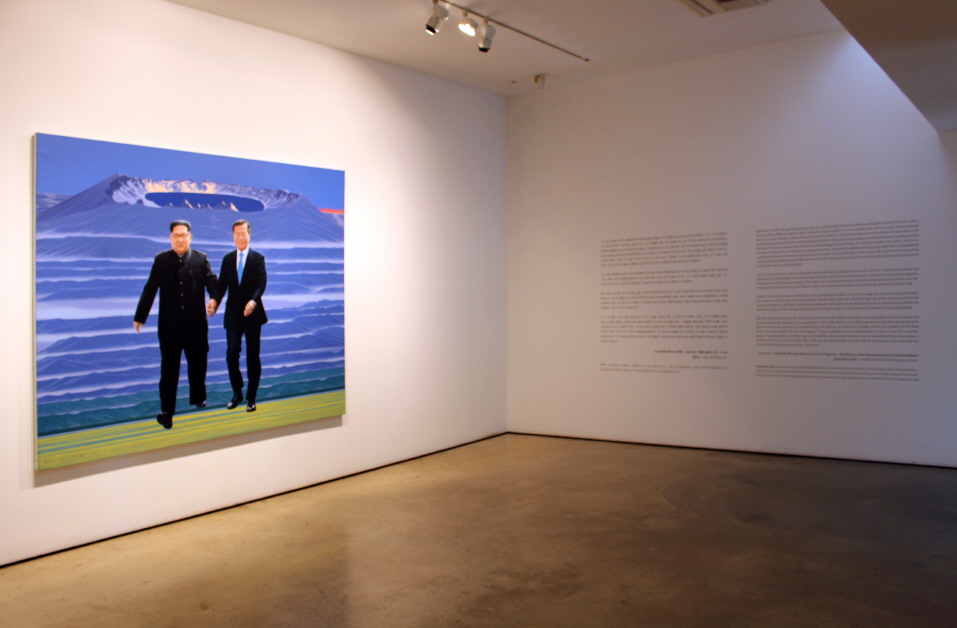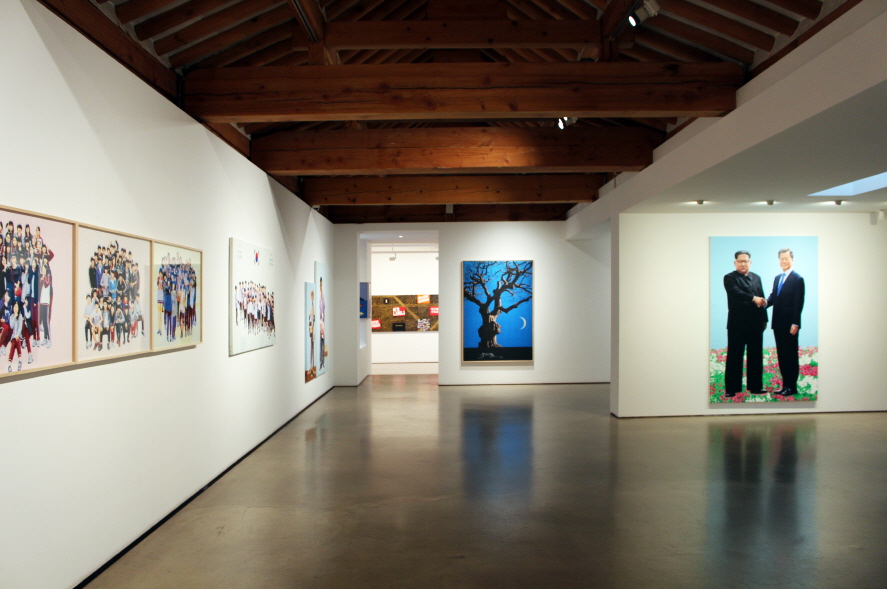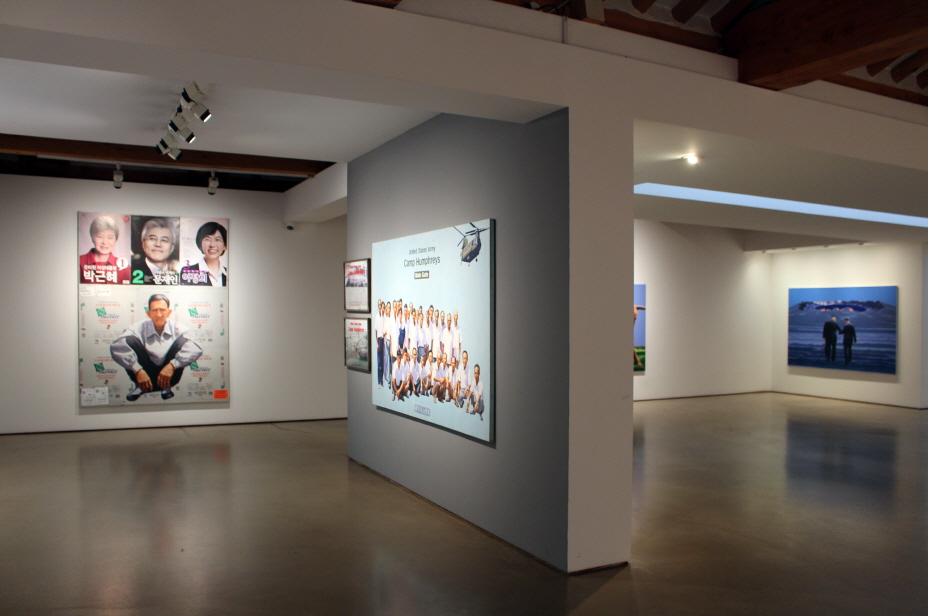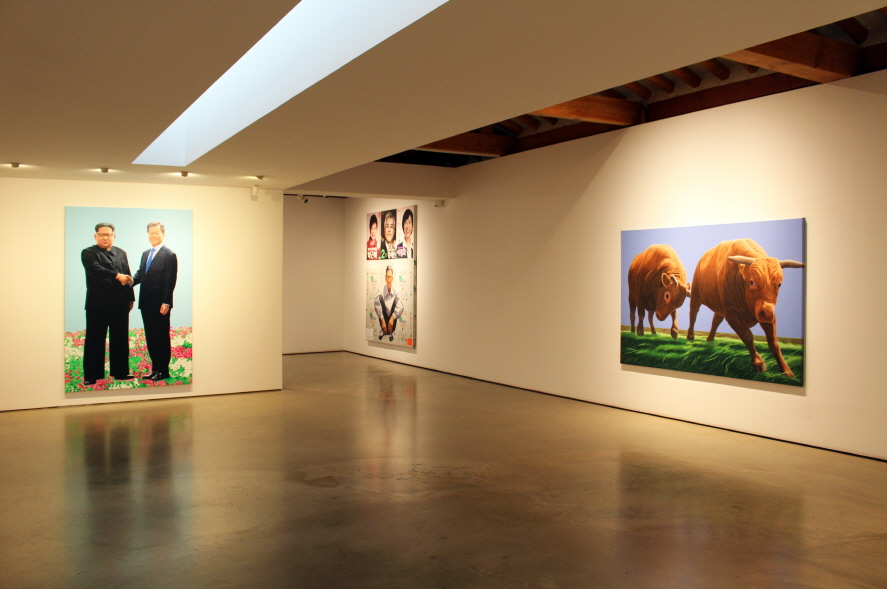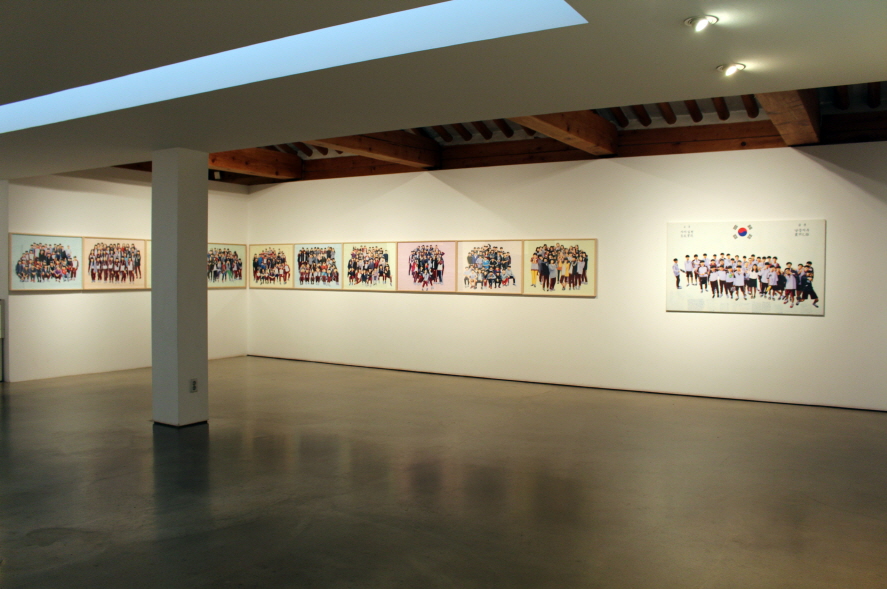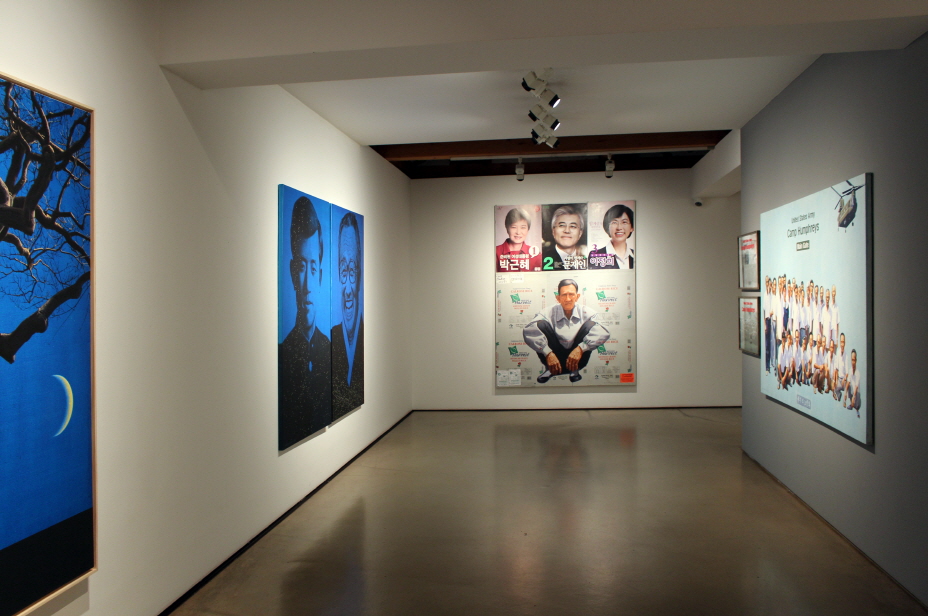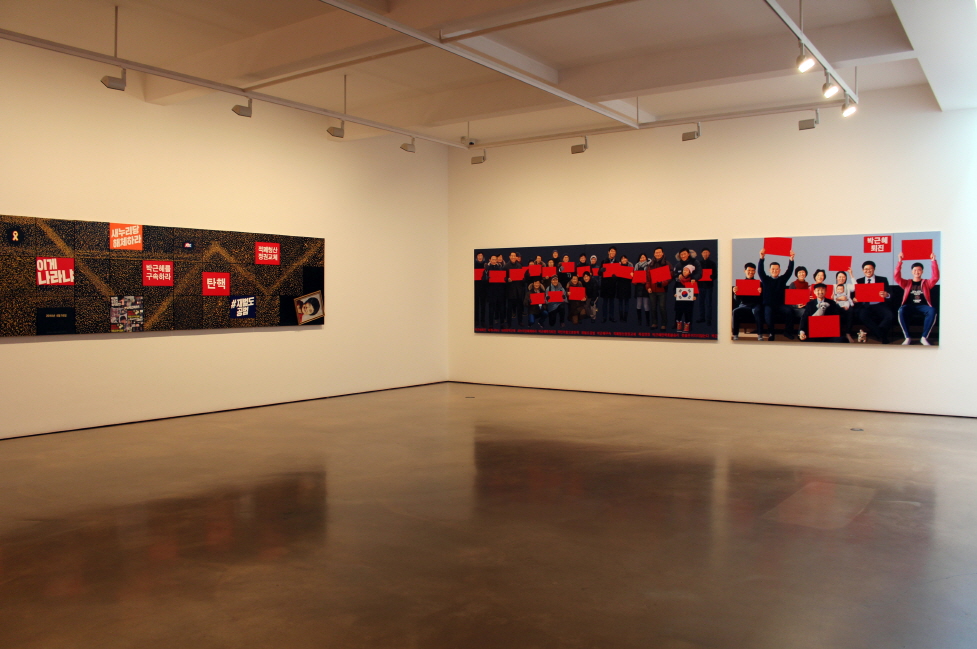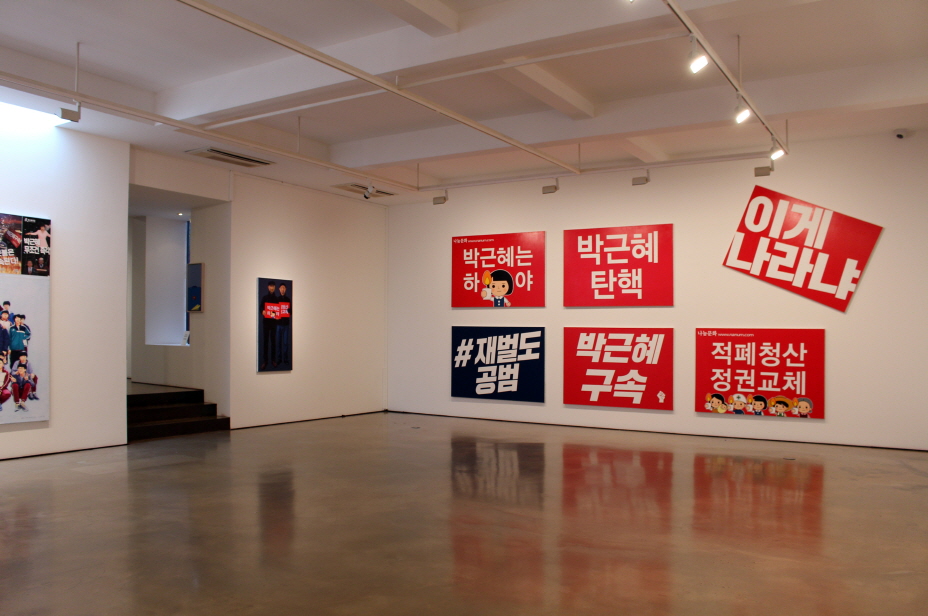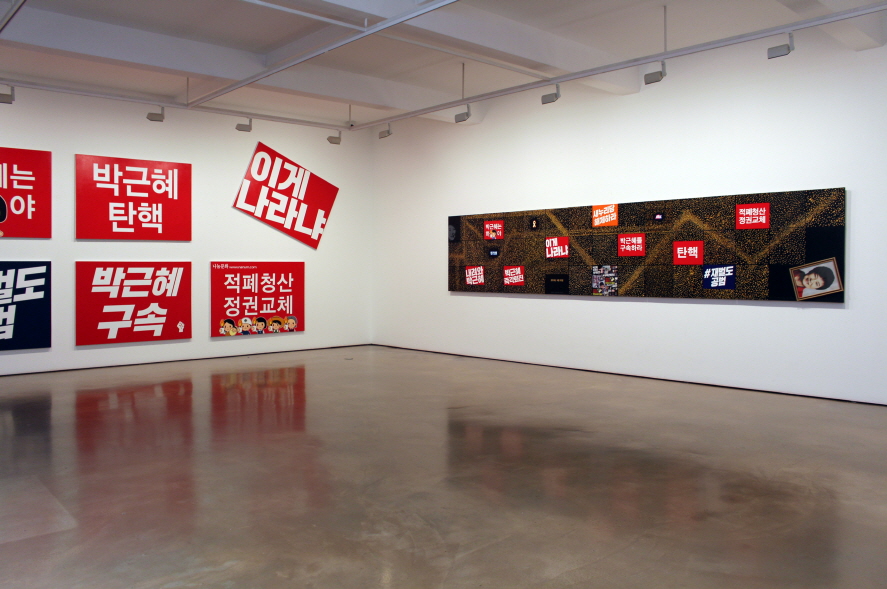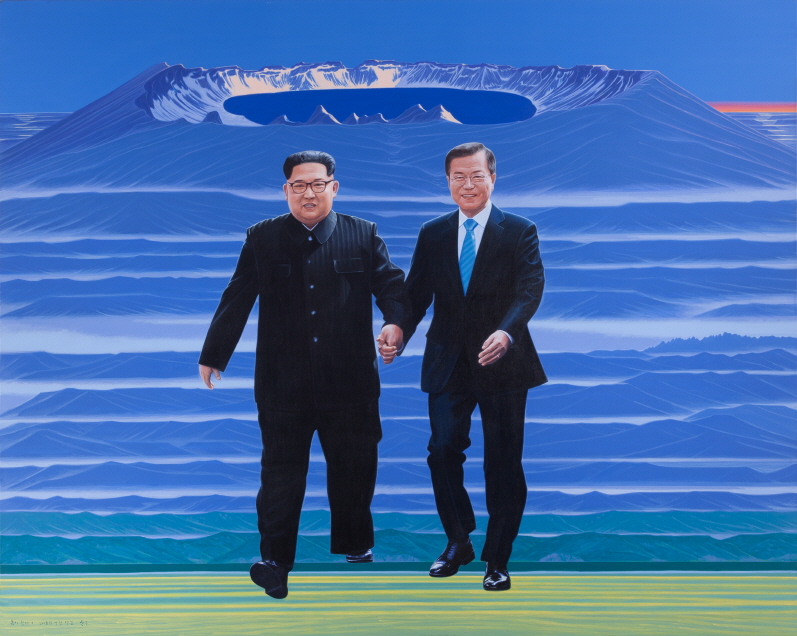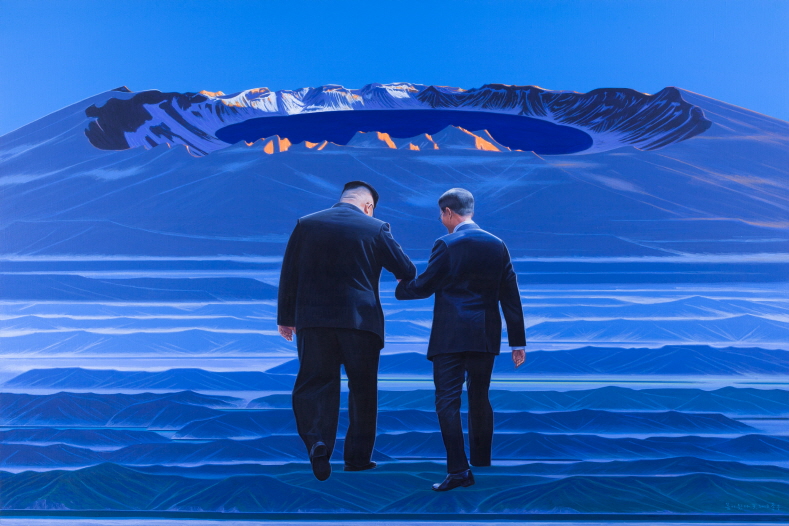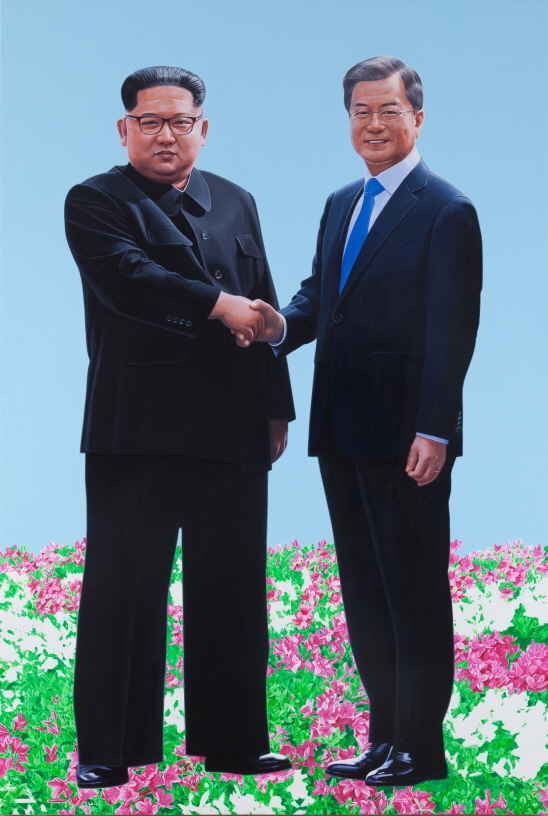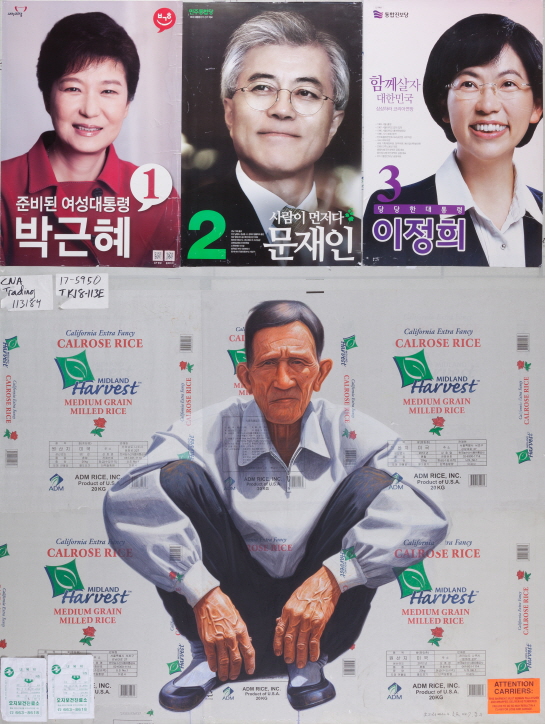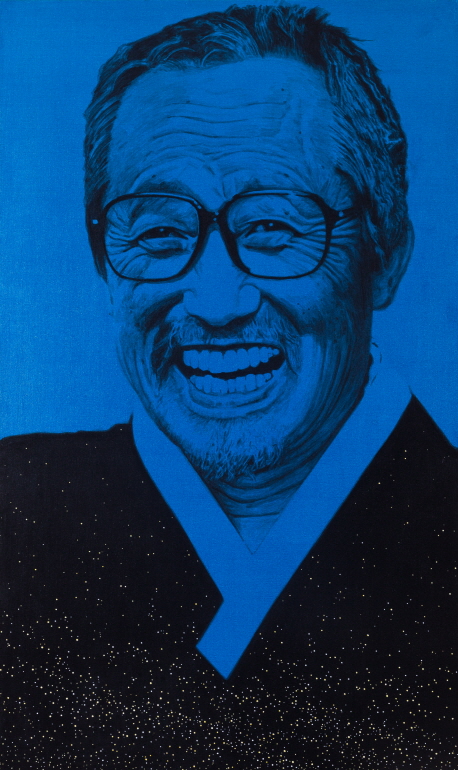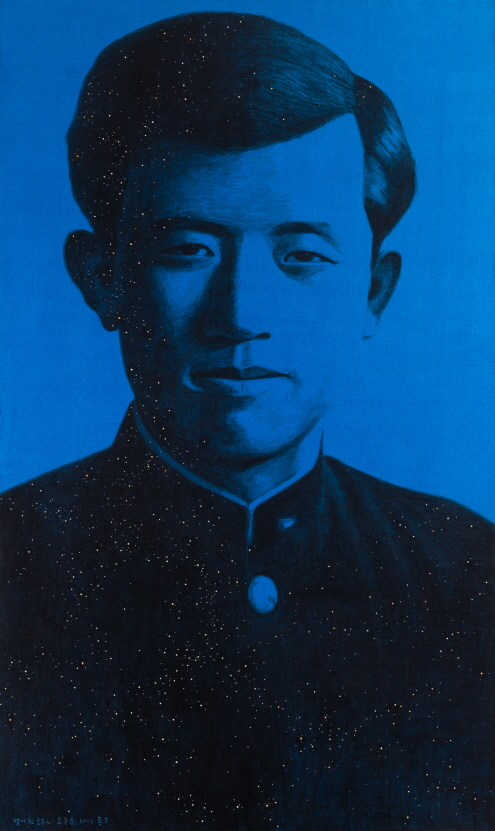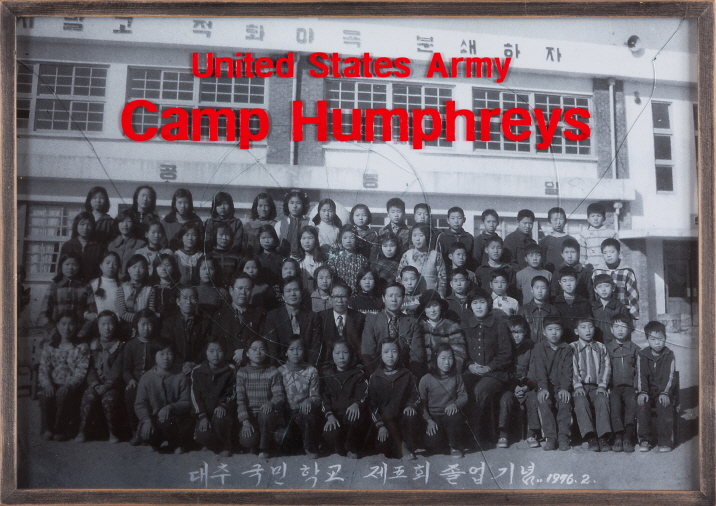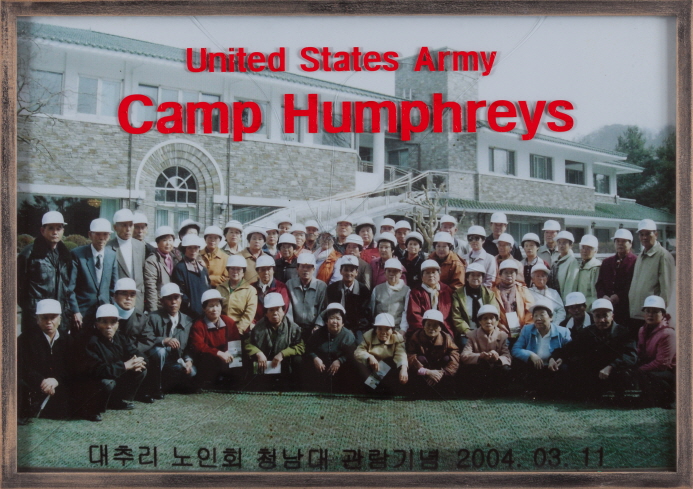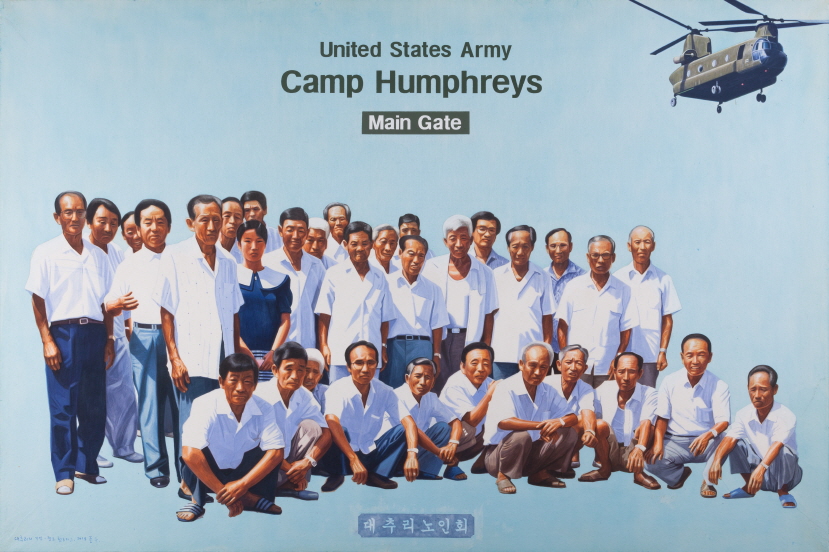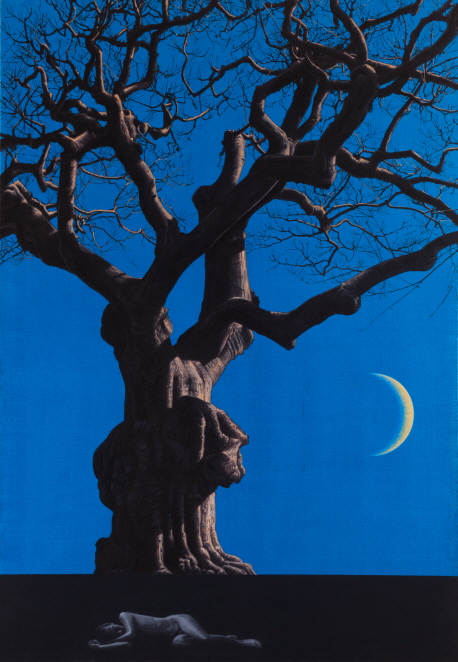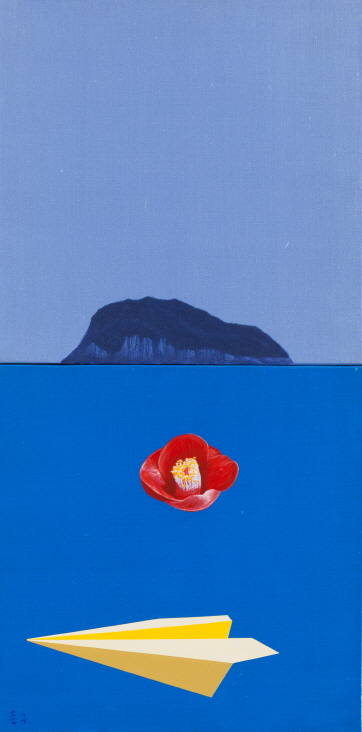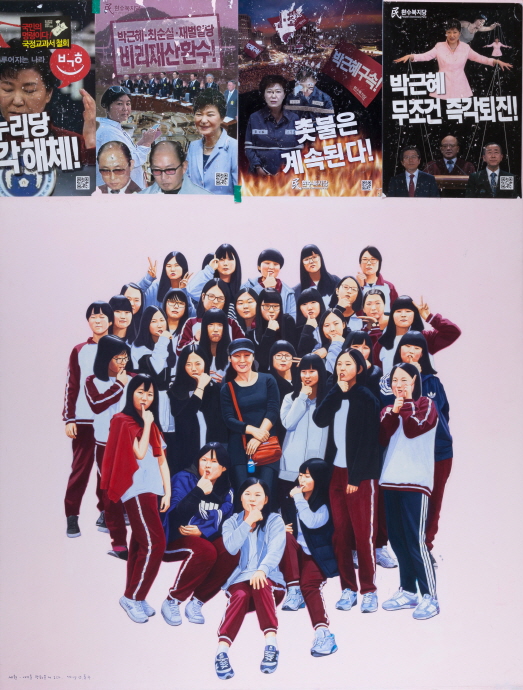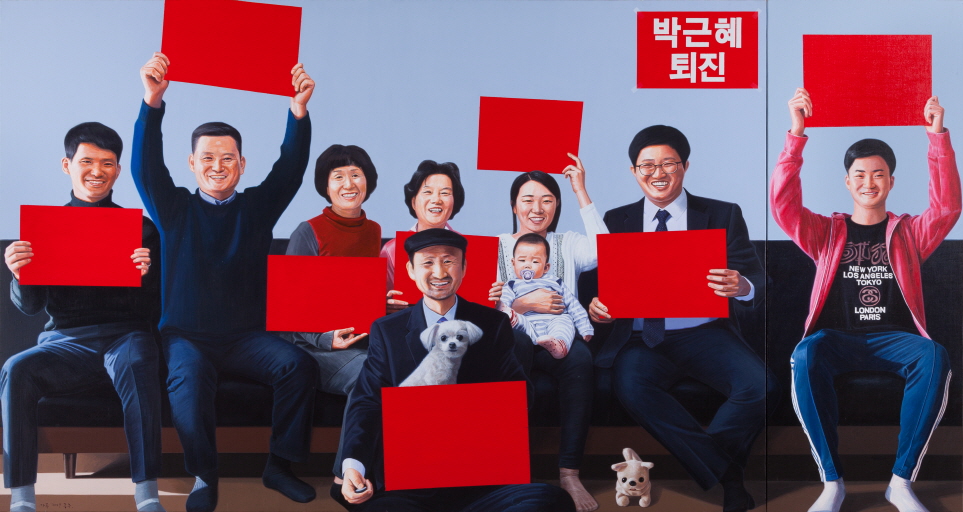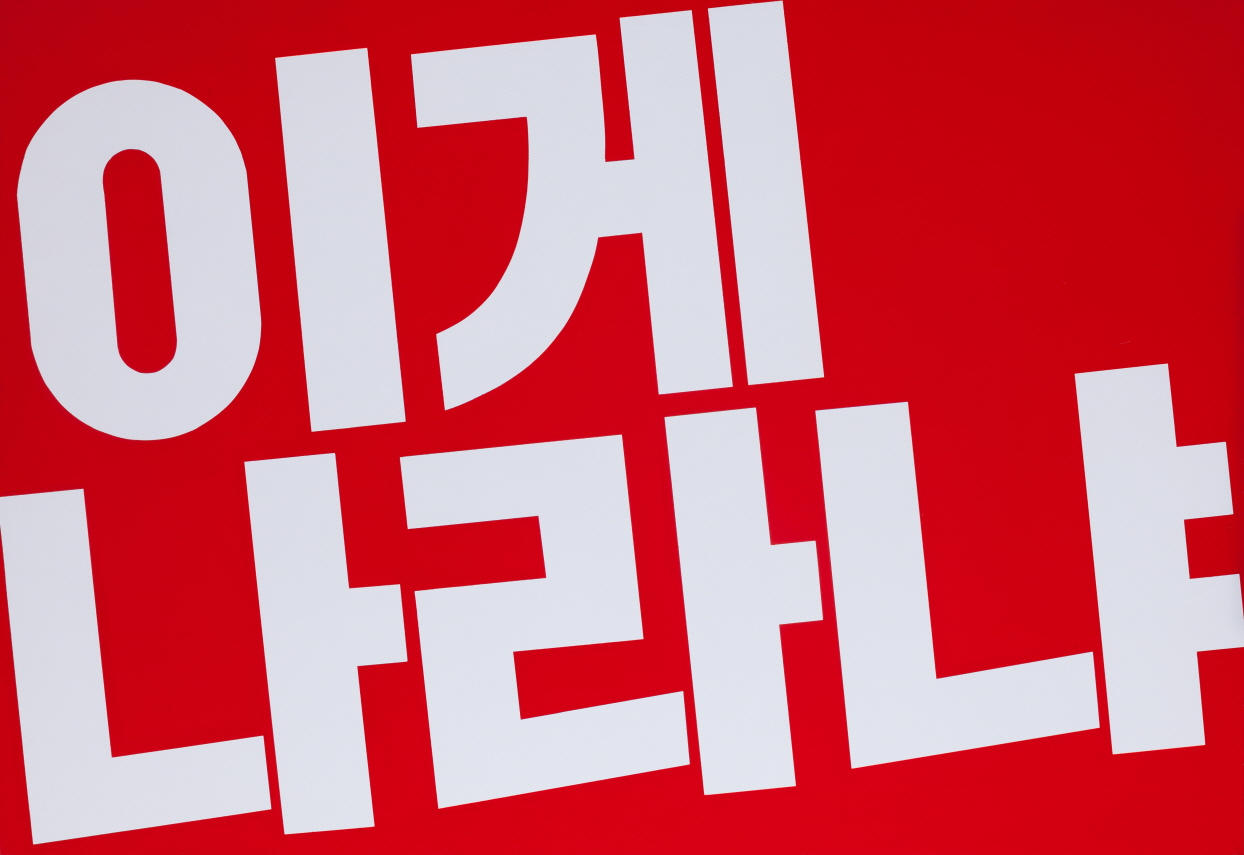LEE Jong-gu: Agora_Spring Is Here
LEE Jong-gu
More than a handful of people recognize Lee Jong-gu as an artist who has been excellently painting the land and its farmers, whom he has profound affection towards. I believe only half of this recognition is correct, and the other half is incorrect. I have witnessed many times as his colleague working at the same school his affection towards the people who live with their feet grounded on the land. Whenever students visit farms and rural areas to provide a helping hand, it was always one step behind Lee, as he always visited beforehand. I have yet to see another professor who buys Makgeolli and pork belly out of his own pockets every year to visit and encourage his students who are willing to accompany the farmers. Also, anyone would know that Lee has undertaken and painted the vanishing wrinkled lives of farmers, unable to receive attention from any memories. Yet the reason why only half of the recognition is correct is that it overlooks at Lee’s different interests he had, different paintings that he painted, and his choices and challenges as an artist that made everything possible.
Lee is an artist who bears a universal perception that enables him to imagine the fate of the owner of an abandoned textbook and notebook in an Arab alleyway, as well as the only artist in the world who painted the process and outcome of the global expansion of capitalism on Californian rice wrappers. The reason why Lee has been painting rural areas and farmers was not that he is an agricultural-artist, but because he is one of the rare artists who understand the reason to remember the underlying formula of life.
A good novel constructs stories out of images, and a good painting renders a story into an image. Lee Jong-gu has perceived better than anyone, tenaciously digs into, and excellently embodied the context of a story that must not be lost nor renounced. He has been always diligent in providing a pedestal for protagonists who deserve to be celebrated. The figures that he has painted for this exhibition counts over 500. This is probably larger than the total number of the people he has painted in the past put together.
How then would there only be 500 stars he has painted? From the children and teachers of Danwon High School who became the stars that enabled the redemption of our generation, to the 16,894,280 stars that entitled global peace and drew out the spring for Korean Peninsula, the numbers are countlessly large. Although Lee has stated that he gladly will bear the aesthetic loss for these stars in his works, however, this will never happen. If there is anything to be lost generated by his choice to seal off an aesthetic bypass of keeping distance to clearly engrave the platform where beautiful people must be remembered have once existed, it would be a loss for art, not Lee Jong-gu. Who could ever deny that through Lee’s bold aesthetic determination, the reality that was more moving than any art is now, at last, a part of art?
Excerpt from “The People Who Have Become Stars in His Fingertips – The Memories of the Heartbreaking and Sacred Scintillation”
Bang Hyeon Seok l Novelist, Professor at Chung-Ang University
Bang Hyeon Seok l Bang’s major works include Off to Battle at Dawn, The House that Opens Tomorrow (1991), Time to Eat Lobster, When They Call My Name, Sewol, etc. He has received the Shin Dong-yup Prize for Literature, Oh Yeong-su Literary Award, and Hwang Sun-won Literary Award. He is currently a professor in the Creative Writing Department at the Chung-Ang University, and is serving as the vice president in the same university as well.


